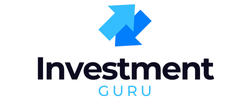Every lasting payoff plan begins with clarity. The Debt Management Guide you’re reading teaches proven, practical strategies into a step-by-step system you can start today.
You’ll assess your current position, select a payoff method that fits your psychology and numbers, and put automation around the process so progress continues even on busy days.
Along the way, you’ll learn to negotiate better rates, choose when consolidation helps, and protect your credit profile while eliminating balances.
Whether you’re tackling credit cards, student loans, medical bills, or personal loans, this guide helps you make measurable progress—without guesswork.
Table of Contents
Understanding Your Starting Point
Start with a precise snapshot:
- Cash flow: List all income sources after tax; then list fixed expenses (rent, insurance, minimum loan payments) and variable expenses (food, fuel, entertainment).
- Net worth: Add assets (cash, accounts, retirement) and subtract liabilities (loans, cards).
- Debt inventory: For each account note balance, APR, minimum payment, due date, and fees.
Create a simple table:
| Account | Balance | APR | Minimum | Due Date | Notes |
|---|---|---|---|---|---|
| Card A | $3,200 | 24.9% | $80 | 15th | Late fee risk |
| Card B | $1,450 | 19.9% | $40 | 8th | 0% BT possible |
| Personal Loan | $6,000 | 11.5% | $180 | 28th | Fixed term |
This single page is your command center. Update it monthly.
Building a Realistic Budget
Debt payoff succeeds when your budget is honest. Try one of these:
- Zero-based budget: Assign every dollar a job (bills, debt, savings, fun), ending with $0 unassigned.
- 50/30/20 rule: 50% needs, 30% wants, 20% debt and savings—tweak for aggressive payoff.
- Envelope or category caps: Put spending limits on categories where you overshoot.
Practical tips:
- Move due dates to match your paycheck cycle.
- Use a separate account for bills so variable spending never “steals” from minimums.
- Insert a small “miscellaneous” buffer to avoid breaking the plan over a $30 surprise.
Debt Inventory and Prioritization
With all accounts listed, pick a payoff order. Two classics dominate results: snowball and avalanche. Choose the one you’ll stick with, not the one that sounds smartest on paper.
Credit Score Essentials
Your score influences interest rates and consolidation options. Key factors:
- Payment history: Never miss minimums.
- Utilization: Keep credit card balances below 30% of limits; under 10% is ideal.
- Average age and mix: Avoid closing your oldest card; mix of installment and revolving helps.
- New credit: Space out applications to protect your score.
Set auto-pay for minimums and reminders for extra principal payments.
The Debt Snowball Method

Snowball orders debts from smallest balance to largest. You pay minimums on everything, then throw all extra cash at the smallest. Each paid-off account frees a payment you “roll” to the next.
Why it works: Visible wins build momentum and reduce decision fatigue. If you’ve started and stopped plans before, snowball keeps motivation high.
The Debt Avalanche Method
Avalanche orders debts by highest APR first. It saves the most interest over time, which can shorten payoff length—especially with high-rate credit cards.
When to pick avalanche: You’re numbers-driven, comfortable delaying early victories, and carry balances with double-digit APRs.
Hybrid Payoff Strategy
You don’t have to choose strictly. Knock out a tiny balance quickly for psychological momentum, then switch to avalanche to maximize interest savings. This hybrid approach balances motivation and math.
Consolidation and Refinancing
Consolidation can simplify multiple payments into one and potentially reduce your APR.
Options:
- Personal loan: Fixed term and rate; ideal if your credit score can secure a lower APR.
- Balance transfer card: Intro 0% APR for a set period; factor in transfer fees and have a plan to finish before the promo ends.
- HELOC or cash-out refi: Lower rates but secured by your home—use with caution.
Good fit when: The new payment is affordable, the term isn’t excessively extended, and you commit to not reusing old credit lines for new spending.
Debt Management Plans

A nonprofit credit counseling agency can place you on a Debt Management Plan (DMP). They may negotiate lower interest rates and consolidate your credit card payments into one monthly amount paid through the agency.
Pros: Structured plan, potential fee/interest reductions, accountability.
Cons: Some cards may be closed; a monthly fee may apply; requires consistent payments.
When Settlement Makes Sense
Debt settlement means negotiating with a creditor or collector to accept less than the full balance. It’s typically considered after 90–180 days of delinquency.
Risks:
- Potential credit score damage and collection activity while negotiating.
- Forgiven amounts may be taxable (Form 1099-C).
- Scams exist—be cautious with for-profit settlement firms.
Use sparingly and only when you cannot realistically repay in full and have explored DMPs or bankruptcy counseling.
Bankruptcy Considerations
Bankruptcy is a legal process for a fresh start when debts are unmanageable.
- Chapter 7: May discharge unsecured debts quickly if you qualify.
- Chapter 13: A three-to-five-year repayment plan based on income.
Before deciding: Speak with a qualified bankruptcy attorney or a HUD-approved counselor to understand eligibility, timelines, and what assets are protected in your jurisdiction.
Emergency Fund Tactics
A small buffer prevents new debt while you’re paying off old debt.
- Start with a starter fund of one month of essential expenses.
- After debt payoff accelerates, grow to three to six months.
- Use sinking funds (mini-savings buckets) for irregular costs like car repairs or annual premiums.
Cutting Expenses Strategically

Trim costs without starving your lifestyle:
- Fixed costs: Negotiate insurance, switch cell plans, refinance where sensible, compare subscriptions annually.
- Variable costs: Meal plan, buy generics, reduce food waste, set fuel routes, review streaming.
- Housing: Consider a roommate or shorter lease renewal for flexibility.
Use a quick audit: highlight your bank statement; anything that doesn’t improve health, income, or happiness is a candidate to cut.
Increasing Income Fast
A second lever is earning more:
- Short-term boosts: Overtime, weekend shifts, sell unused items, seasonal gigs.
- Freelancing: Use existing skills (design, writing, tutoring, rideshare).
- Career moves: Ask for a raise with a quantified case; pursue certifications with high ROI.
Direct every extra dollar to your primary target debt within twenty-four hours to avoid lifestyle creep.
Automating Your Finances
Automation protects you from forgetfulness and busy weeks:
- Auto-pay minimums for every debt.
- Automatic transfers to your payoff account each payday.
- Calendar blocks for monthly reviews and quarterly renegotiations.
Set alerts for statement availability, large transactions, and low balances.
Handling Collections
If an account is in collections:
- Request debt validation in writing within thirty days of first contact.
- Keep communications in writing; log dates and details.
- Know your rights regarding harassment and call times; consider a cease-and-desist letter if needed.
- If you negotiate, get the agreement in writing before sending money.
Student Loan Strategies
- Evaluate income-driven repayment (IDR) options if federal loans stretch your budget.
- Avoid forbearance unless necessary—it often increases total cost through interest capitalization.
- Private loans may benefit from refinancing if your credit and income qualify.
Mortgage and Auto Loan Moves
- Mortgage: Biweekly payments can add one extra principal payment per year; refinance only if closing costs and break-even make sense.
- Auto loan: Round up payments; consider selling or trading down if the payment overwhelms your budget.
Credit Card Optimization
- If using a balance transfer, avoid purchases on the same card unless the promo includes purchases; keep track of the promo end date.
- Keep utilization low by paying multiple times per month or before the statement date.
- Do not close your longest-tenured card; length of credit history matters.
Interest and Fees Explained
Understanding interest helps you choose tactics that save the most money.
Daily periodic rate (DPR) example: If APR is 24%, DPR ≈ 0.24 / 365 ≈ 0.0006575 (0.06575%). A $3,000 balance accrues roughly $1.97 per day before fees. Reducing APR or accelerating principal cuts this daily cost immediately.
Psychological Tools for Success

- Habit loops: Tie actions to triggers (e.g., payday → transfer extra to target debt).
- Accountability: Share goals with a trusted friend or community.
- Celebrate milestones: When a card hits zero, mark the win—just not with a purchase that adds new debt.
Family and Partner Communication
Hold a weekly money meeting:
- Review wins and setbacks.
- Confirm next week’s payments and grocery plan.
- Re-align on goals: “Why do we want this?”—less stress, more freedom, options.
Transparency prevents surprises and creates teamwork.
Protecting Your Progress
- Insurance review: Health, disability, renter’s/homeowner’s can prevent one accident from derailing your plan.
- Fraud monitoring: Freeze credit if you’re not seeking new accounts, or set alerts to catch issues quickly.
- Document storage: Keep agreements, payoff letters, and validation notices organized.
Taxes and Debt
- If you expect a tax refund, decide now if it will seed your emergency fund or crush a high-APR balance.
- Be aware that forgiven debt in settlement can be taxable income; plan for it.
Tools and Apps
Consider a simple tech stack:
- Budget app to categorize and set caps.
- Debt payoff calculator to compare snowball vs avalanche timelines.
- Savings automations that move small daily amounts to your payoff account.
Tracking and Reporting
Create a lightweight KPI dashboard:
- Total debt
- Weighted average APR
- Projected payoff date
- Utilization ratio
- Emergency fund balance
Update monthly and chart the balances to visualize momentum.
The Debt-Free Lifestyle

As balances drop, keep the behaviors that got you here:
- Continue budgeting, just redirect former payments to investing and sinking funds.
- Spend in line with your values—prioritize experiences and goals you truly care about.
- Rebuild credit mindfully; pay statements in full each month.
Common Mistakes to Avoid
- Skipping minimum payments
- Closing long-standing credit lines
- Financing depreciating assets at high rates
- Extending loan terms excessively just to lower the payment
- Not reading the fine print on balance transfers and consolidation loans
Action Plan and Timeline
This week
- Build your debt inventory and budget.
- Choose snowball, avalanche, or hybrid.
- Set auto-pay for every minimum.
This month
- Make your first extra principal payment.
- Call to negotiate APR reductions or request hardship programs.
- Start a starter emergency fund.
This quarter
- Evaluate consolidation options if they reduce cost and simplify without prolonging debt.
- Track your KPI dashboard and adjust.
This year
- Eliminate high-APR cards, then personal loans.
- Reassess insurance, taxes, and career income strategies.
Frequently Asked Questions
What’s the fastest way to pay off high-interest credit card debt?
Mathematically, the avalanche method—targeting the highest APR first—saves the most interest and often shortens payoff time. Combine it with rate negotiations and, if eligible, a well-structured balance transfer you can finish within the promo period.
Is debt consolidation always a good idea?
No. It’s helpful only if the new APR and total cost are lower, the payment is affordable, and you won’t run balances back up. Otherwise, consolidation can extend terms and increase total interest.
How big should my emergency fund be while paying off debt?
Aim for a one-month starter fund to prevent new debt during setbacks. After high-APR debt is gone, build toward three to six months of essential expenses.
Will closing credit cards raise my score?
Usually not. Closing cards can raise utilization and reduce average age of accounts, which may lower your score. Consider keeping old accounts open and unused.
Should I pay debt or invest first?
High-APR consumer debt (e.g., 20%+ cards) usually beats expected market returns; paying it off is the better guaranteed “return.” Continue any employer match contributions so you don’t leave free money on the table.
What’s the difference between a DMP and settlement?
A Debt Management Plan keeps you repaying in full but often at reduced interest, coordinated by a nonprofit counselor. Settlement tries to resolve for less than owed, typically after delinquency, with larger credit and tax consequences.
Conclusion
The Debt Management Guide you’ve just followed gives you a clear, practical path: understand your numbers, pick a payoff strategy that fits your behavior, automate the plan, and protect your progress. With a realistic budget, a small emergency buffer, and consistent extra payments focused on your priority balance, you can reduce interest costs, improve your credit profile, and move toward a life with options. Start with one action today—build your inventory, make the first extra payment, or schedule the call to lower your APR. Then repeat. Consistency, not perfection, is what pays off debt.


